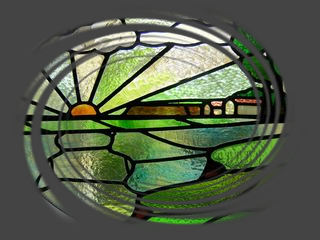 |
Pen y Fan & Corn Du, South Wales UK |
 |
Pen y Fan & Corn Du, South Wales UK |
Pen y Fan is the highest mountain in South Wales, UK at 886m / 2906 ft above sea level
Actually it's almost a double peak with Corn Du just 800M away which is at 873m 2864 ft above sea level
both of them are topped with the Old Red Sandstone which is the name given to a series of rocks (mostly sandstone, but not entirely) which were laid down in desert conditions some 400 or so million hears ago (Mya) To be a bit more precise (and that is hard with these rocks because they ccontain so few fossils) the bulk of the Old Red Sandstone is of Devonian age which extends from the end of the Silurian 419.2 Mya, to the beginning of the Carboniferous 358.9 Mya
Most of the rocks are desert sandstones probably laid down as sand dunes, but within these desert conditions there were occasionally rivers and lakes and it is quite common to find sections of ripple marks such as you would find on any modern beach.
The familiar red colour of these rocks is caused by the presence of iron oxide but not all the Old Red Sandstone is red and not all of it is sandstone. The sequence of rocks also includes conglomerates, mudstones, siltstones and thin limestones. The colours can range from grey and green (a different form of iron oxide with not as much oxygen in it) through to red and purple. These deposits are closely associated with the erosion of the Caledonian Mountain chain which was to the north of the Brecon Beacons National Park all of those millions of years ago.
Any limestone layers are most important to geologists because these sometimes have fossil fish in them which allows some form of dating. The Devonian period it'self is often called "The age of the fishes" because it's before amphibians were common, and as far as people have yet been able to determine absolutely before reptiles and their descendents the birds and mammals
The landscape shapes here are formed by the glaciers which were on top of these rocks during the Ice Ages which started around 2,588,000 years ago and by some definitions could be considered as still ongoing if it were not for man made climate change. The Last Glacial Period (LGP) occurred c.115,000 – c.11,700 years ago. in these icy times glaciers formed in the mountainous areas of the UK and especially in north facing valleys, and it is these which are the steepest slopes down from the tops of the Brecon Beacons